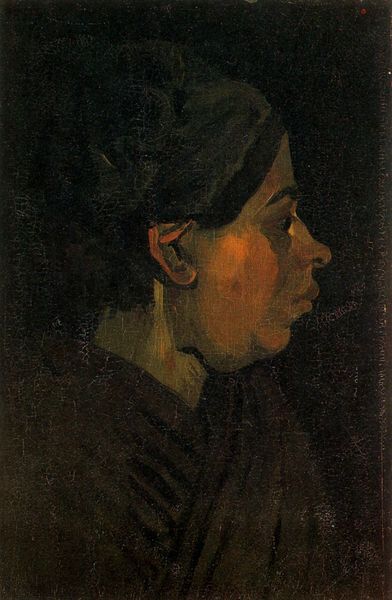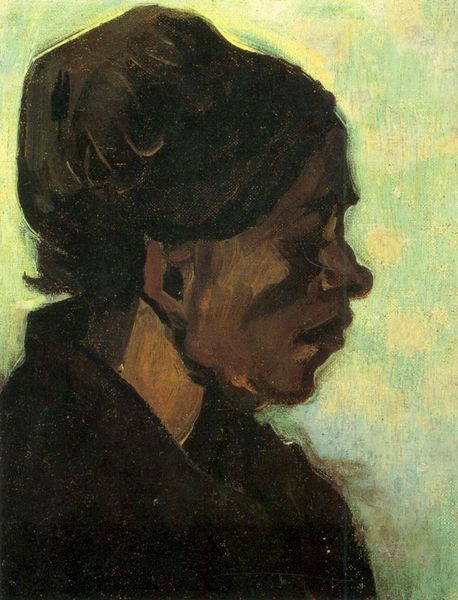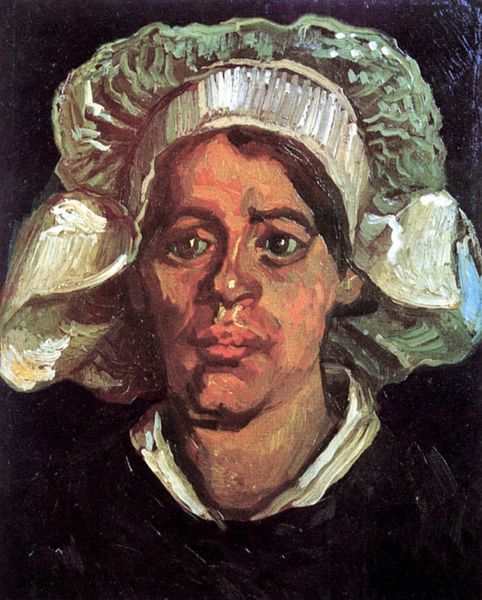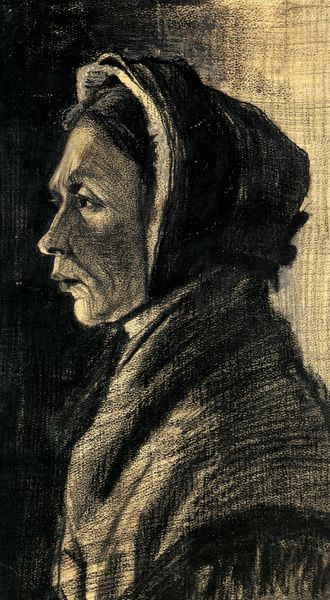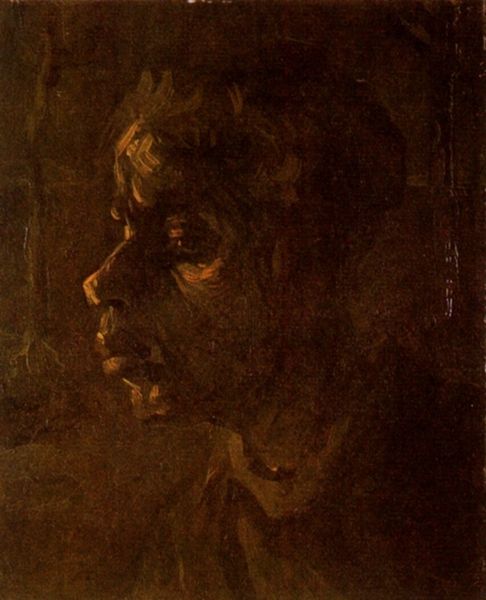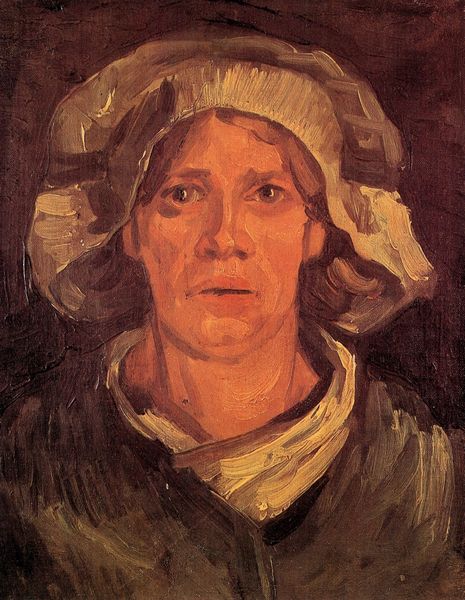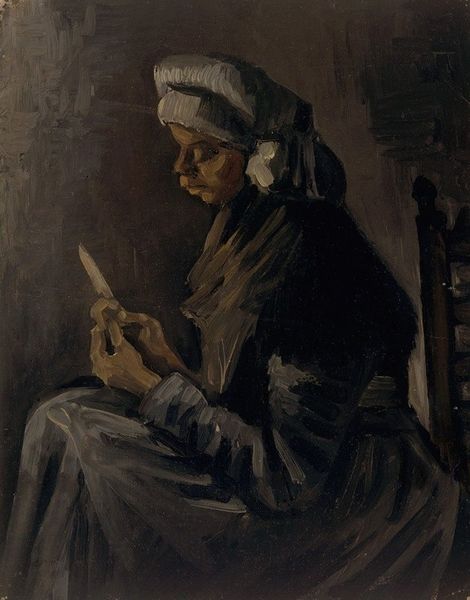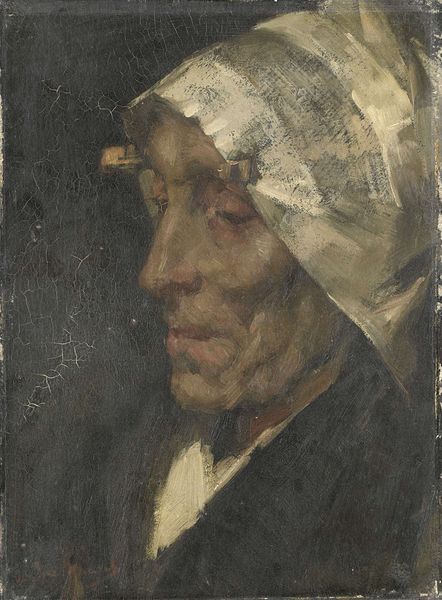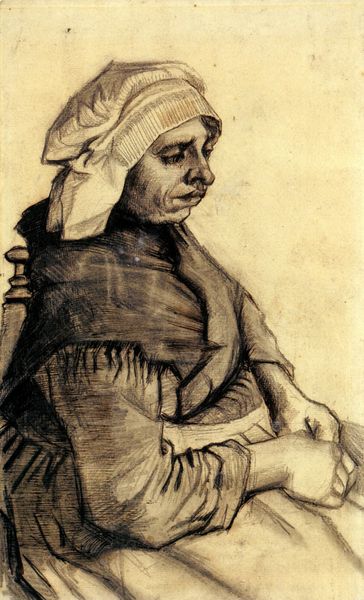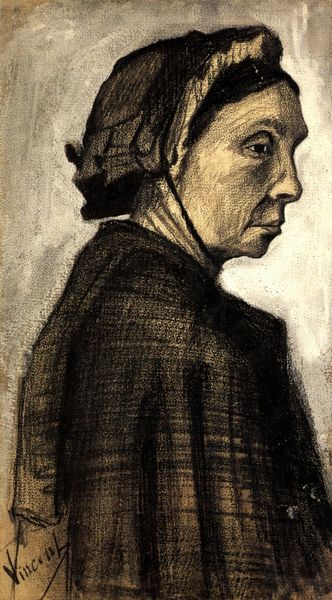
Head of a Peasant Woman with White Cap 1885
0:00
0:00
vincentvangogh
Woodone Museum of Art, Yoshiwa, Japan
painting, oil-paint
#
portrait
#
dutch-golden-age
#
painting
#
oil-paint
#
oil painting
#
realism
Copyright: Public domain
Curator: Van Gogh's 1885 work, "Head of a Peasant Woman with White Cap," presents a compelling image rendered in oil on canvas. The museum is fortunate to have it as part of the collection. Editor: It strikes me as rather severe. The earth tones feel heavy, grounded, almost… somber. What draws your attention when considering this painting's place in Van Gogh's output? Curator: The materiality speaks volumes. Look at the thick, visible brushstrokes. Each dab and swirl of paint are practically sculptural. Considering his move from the Netherlands to France, we see a transition, but the foundation remains in this dedication to portraying working-class life through honest depiction of physical labor. Editor: The white cap, of course, is meant to signal something specific. Traditionally, it could point to regional identity, status within a religious community, even a specific role within her family, such as being a wife or widow. Do you think Van Gogh intended this level of specificity? Curator: Absolutely. Remember that Van Gogh's artistic practice was deeply intertwined with his social concerns. He spent time among the peasants, sharing their living conditions. This painting isn’t just a study in light and shadow; it's a record of material conditions and the social structures influencing rural existence. Editor: Yet the portrait is devoid of almost any setting. The cap looms as large as the face; both become iconic forms within a compressed space, almost monumentalizing this anonymous woman. Do you believe he wanted to universalize the suffering, turning an individual into a symbol of the oppressed? Curator: I agree. Her very anonymity serves a purpose. Through the directness of Van Gogh's paint application and compositional focus, the woman's likeness becomes a document—a form of preservation—of labor rendered against exploitation, perhaps hinting at early stages of class-based social consciousness. Editor: I hadn't considered the painting as a form of preservation before, a holding of time and status, with this faceless form evoking generations to follow in her stead. Thank you for bringing this idea to life, placing the picture into its vital cultural situation. Curator: The layers of paint mirroring layers of context is truly the work's most poignant touch. The way Van Gogh loaded up the oil, mimicking manual processes and lived reality…it just reveals something new each time you look.
Comments
No comments
Be the first to comment and join the conversation on the ultimate creative platform.


